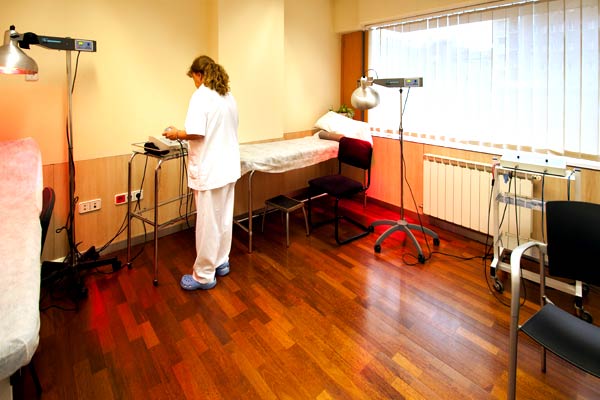What is Physiotherapy?
Physiotherapy is a health profession, as set out in the LOPS (Law 44/2003 on the Organization of the Health Professions).
According to the World Health Organization, physical therapists assess, plan, and carry out rehabilitation (treatment) programs to improve and restore motor function, maximize movement, relieve pain syndromes, and treat and prevent physical impairments associated with disease. , injuries and other disabilities. They apply a wide range of techniques, such as movement and physical media. They also develop and implement prevention and detection programs for common diseases and physical disorders.
The WCPT (World Confederation for Physiotherapy) states that Physiotherapy involves interaction between the physiotherapist, patients/clients, other health professionals, families, carers and communities. Physiotherapists seek to maximize the quality of life in the area of promotion, prevention and treatment taking into account the four dimensions of the human being: physical, psychic, social and ethical/spiritual.
Physiotherapists are qualified to:
- Carry out a comprehensive Physiotherapy examination/assessment.
- Evaluate exam/assessment results by:
- Formulate a diagnosis, prognosis and Physiotherapy plan.
- Provide care within their expertise and scope and determine when patients/clients need to be referred to another professional.
- Implement a treatment program.
- Determine the results.
- Make health promotion and self-care recommendations for patients.
- And in each PHYSIOTHERAPY submenu, add the texts that I copy below:
THERAPEUTIC EXERCISE
Today we know that an illness, injury or pain affects the quality of life and the physical capabilities of the person. That is why a fundamental part of the approach is to recover the affected physical capacities. International consensus guidelines and recommendations recommend therapeutic exercise.
Therapeutic exercise is the performance of body movements and actions with the aim of improving symptoms of an injury/pathology by improving function and improving/maintaining health levels. Develop strength, endurance, cardiovascular capacity, stability, coordination, balance and mobility.
In this way we achieve:
– Modification of symptoms
– Reduction of pain and fatigue
– Improve the quality of life and autonomy
– Motivational changes and increased self-efficacy, security and confidence
– Overcome behaviors related to fear-avoidance of movement by regaining participation in day-to-day activities
– Analgesic and anti-inflammatory responses
– Improve the condition of the injury/pathology
– Regenerate tissues
– Increase the body’s physical condition and metabolism
– Decrease body fat and change body composition
– Decrease disability, risk of disease and increase survival
– Greater cardiac function and lung capacity efficiency
FORCE HEALTH
As we explained earlier, exercise helps us live longer and healthier lives.
A fundamental part of therapeutic exercise in pathologies such as cancer, osteoarthritis, diabetes or osteoporosis is strength training.
As we age, it will be more important to incorporate strength training into our lives because we are losing muscle cells and therefore limiting ourselves in our family life and independent life: getting up from the chair or climbing stairs, for example.
Strength training brings much more than having stronger muscles. For example, it improves how the body processes food to help prevent diabetes, or it also makes your bones have better density.
But that’s not all, strength training also improves our mental health.
Planning a good progression of strength exercises helps us to:
– Decrease risk of cardiovascular disease and chronic diseases
– Improve metabolic, cardio-respiratory, endocrine, neurological, muscular, cognitive and psychosocial components
– Reduce levels of stress, anxiety and depression.
– Reduce the risk of cancer-induced mortality
– Reduce and reverse the levels of cachexia
– Reduce and prevent side effects of treatments
– Recover functional capacity
– Improve the quality of life
– Improve composition and body image

